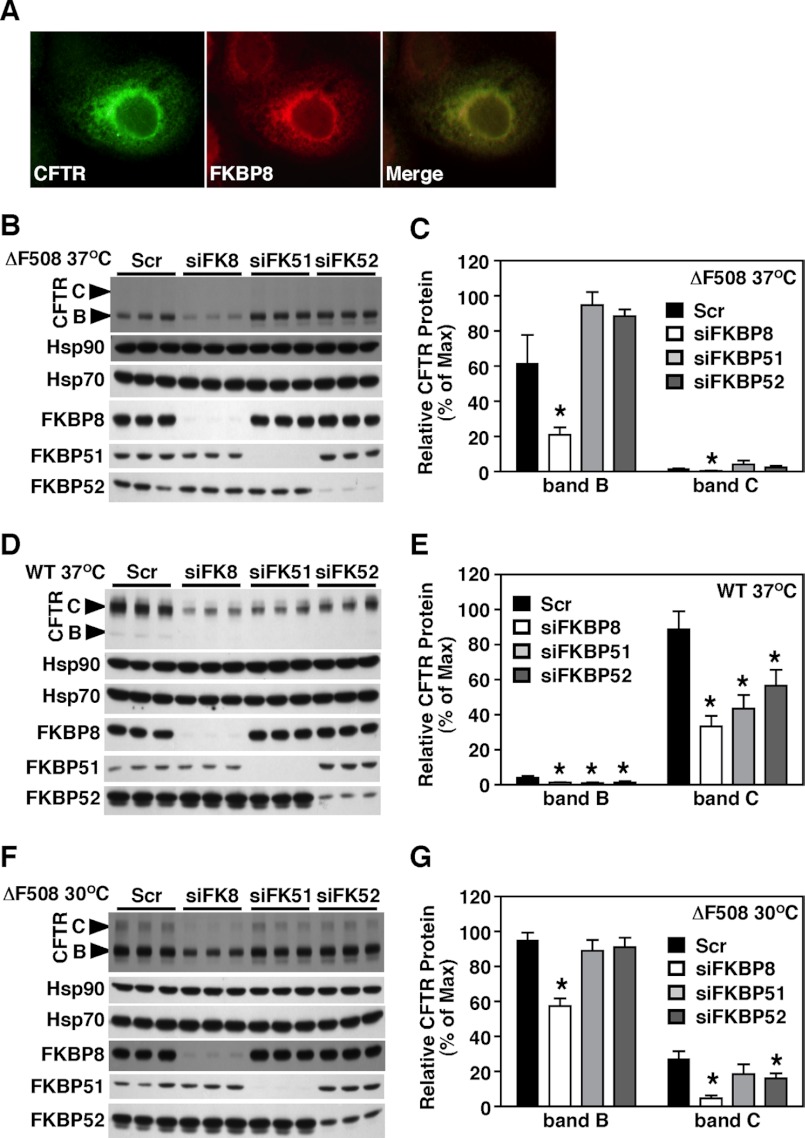FIGURE 2.
FKBP8 co-localizes with ΔF508-CFTR and its silencing reduces the stability of CFTR. A, CFBE41o− cells stably expressing ΔF508-CFTR were stained with M3A7 anti-CFTR antibody (left) and FKBP8-N1 anti-FKBP8 antibody (middle). The merged image (right) reveals significant co-localization. Immunoblot analysis of CFTR, Hsp90, and Hsp70 following the silencing of FKBP8 (siFK8), FKBP51 (siFK51), or FKBP52 (siFK52) in CFBE41o− cells expressing ΔF508-CFTR at 37 °C (B), or WT-CFTR (D), or ΔF508-CFTR at 30 °C (F). The knockdown was confirmed by immunoblot analysis of the respective FKBPs. Quantitative analysis of ΔF508-CFTR band B (B) and C (C) glycoforms following knockdown of FKBP8, -51, or -52 in CFBE41o− cells expressing ΔF508-CFTR at 37 °C (C), or WT-CFTR (E) or ΔF508-CFTR at 30 °C (G). C, E, and G data were normalized to the percent of the maximal signal and are shown as a mean ± S.E., n ≥ 3. p values were determined by two-tailed t test using the scramble control as the reference point; asterisks indicate p < 0.05.

